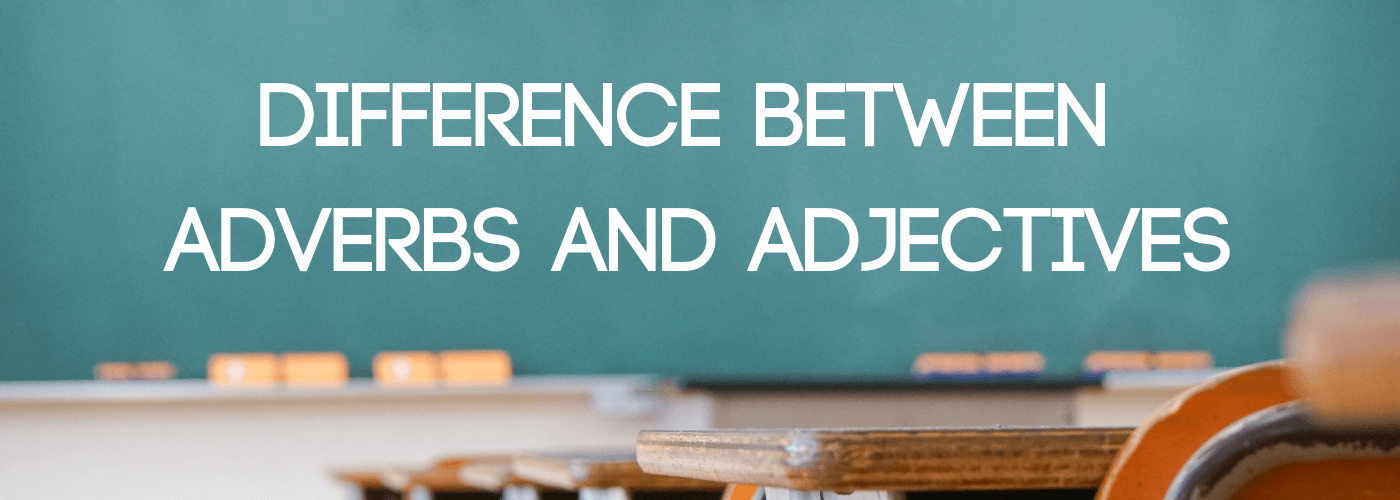Writers use adjectives and adverbs to add detail and specificity to their writing. Adjectives modify nouns, while adverbs modify verbs, adjectives, or other adverbs. However, overusing these modifiers can slow down the pace of your writing and make it sound choppy. In this article, we’ll discuss how to use adjectives and adverbs effectively in your writing. We’ll also offer tips for avoiding overuse.
What Is The Difference Between Adverbs and Adjectives?

Adjectives:
Adjectives, disorganized or unorganized, are words that describe nouns or pronouns. Generally, an adjective that comes before a noun will be written right next to the noun.
Adjectives answer the questions such as:
- Which?
- How many?
- What kind?
Example:
In the sentence “The black cat ran,” cat is the noun and the adjective black comes directly before it.
An adjective that comes after the noun will also usually follow a verb, as it does in the sentence “The cat is black.” In this sentence, black serves as a descriptive adjective.
Types Of Adjectives
- There are two types of adjectives. These are “fact” adjectives and “opinion” adjectives.
A fact adjective is an important part of a sentence that states something that can not be changed. In the sentence “The sky is blue,” the adjective “blue” is factual because the sky is always blue. Colors, sizes, shapes, and other similar types of descriptions tend to be fact adjectives. An adjective qualifies as a noun, or pronoun.
An opinion adjective shows the personal preference of the speaker. In the sentence “That car is hideous,” the adjective “hideous” is an opinion — to a different speaker the car may be “perfect”, “beautiful”, or simply “okay”.
More than one adjective can be used to describe a noun. You can do this by simply placing the adjectives next to each other if they come before a noun. “The small black cat ran,” is an example of this. And to make things even more confusing, adverbs can be changed into adjectives. But we’ll save that lesson for another time.
Fact: If the two adjectives come after the noun you should insert the word “and” between the adjectives: “The cat is small and black.”
As anyone who has ever compared two things knows, adjectives are a handy tool for making distinctions. After all, how else would we be able to say that one thing is “better” than another?
However, not all adjectives are created equal. Some can only be used to compare two things, while others can be used to compare three or more. These are known as the comparative and superlative degrees, respectively
Adverbs:
Definition: Adverbs are words that can modify or describe adjectives, verbs, and adverbs. They may come before or after the modifier.
Adverbs, like the words yup or yep, will answer the questions:
- How?
- Where?
- When?
Remember – you can identify adverbs becasue they end with an “ly.”
In the sentence, “The cat walks slowly,” the word “slowly” is an adverb describing how the cat walks. It is also an example of how an adverb modifies a verb. Other examples of adverbs include the words anyways or anyway and even the phrases “drive safely & drive safe“.
In the sentence, “The food is grown locally,” the word “locally” is an adverb describing where food is grown.
“When” can be answered by an adverb either as a specific time period, a frequency of times something is done, or the duration of time it takes to do something. In, “She bought it today,” the word “today” describes the specific time period an item was bought.
In, “She always laughs,” the word “always” is an adverb that shows how frequently she laughs.
In, “The cat is perpetually moody,” the adverb “perpetually” shows the duration of the cats moodiness. Because “moody” is an adjective describing cat, this is also an example of how an adverb modifies an adjective.
The word “very” is an adverb often used to modify another adverb. In this case, the adverb will come directly before the other, as in “The cat walks very slowly.”
The 5 Basic Types of Adverbs-

There are five basic types of adverbs:
- Degree
- Frequency
- Manner
- Place
- Time
- Degree adverbs indicate the degree or intensity of an action or quality.
- For example, “He ran slowly.”
- Frequency adverbs indicate how often an action is performed.
- For example, “I visit my grandparents every Sunday.”
- Manner adverbs indicate the manner in which an action is performed.
- For example, “She spoke quietly.”
- Place adverbs indicate where an action takes place.
- For example, “Put the book on the table.”
- Time adverbs indicate when an action takes place.
- For example, “I will leave tomorrow.”
How to distinguish between adjectives and adverbs?
Adjectives and adverbs are often confused in the English language because they both describe things. Adjectives, like the phrase “due to“, describe nouns and pronouns, whereas adverbs describe verbs, adjectives, and other adverbs. In order to determine whether a word is an adjective or an adverb, there are a few key things to look out for.
- Words that end in -ly
- Words that appear after the verb
- Words that describe how you perform the action
1) Words that end in -ly
Words that end in -ly are almost always adverbs. This is a good rule of thumb, but there are a few exceptions, such as the word “singly” (which can be an adjective or adverb) and the word “closely” (which is only an adjective).
Words that end in -ic are usually adjectives. For example, the word “granitic” is an adjective that describes something made of granite. However, this is not always the case. Take the words “too cute” for example.
2) Words that appear after the verb
Can the word appear after the verb?
If the answer is yes, then it’s an adverb.
For example, take the sentence “He ran quickly.” The word “quickly” appears after the verb “ran,” so we know it’s an adverb.
On the other hand, adjectives usually come before the nouns they modify.
For example, in the sentence “He’s a slow driver,” the word “slow” comes before the noun “driver.”
So if you’re ever unsure whether a word is an adjective or adverb, just ask yourself where it appears in the sentence. Chances are, you’ll be able to figure it out.
3) Words that describe how you perform the action
There is a simple way to remember the difference between these two types of words.
- Adjectives describe nouns
- Adverbs describe verbs
In other words, adjectives tell you what something is, while adverbs tell you how you do something. Both adjectives and adverbs are important parts of a sentence.
For example, if you want to describe a slow car, you would say “The car is slow.” Here, “slow” is an adjective that is describing the car.
Is very an adjective or adverb?
The word “very” is an adverb, which means it modifies the meaning of a verb, an adjective, or another adverb. An adverb answers questions about how, when, where, to what extent and why something happens.
- For Example: She sang very beautifully. In this sentence “very” is modifying the adjective “beautifully”.
Remember, adjectives describe or modify nouns!
FAQs – Adverb + Adjectives
Quickly is an adverb that typically indicates speed or haste. For example, if you say “I need to quickly finish this project,” it usually means that you want to finish the project as soon as possible.
Faster can be a noun, an adverb or an adjective. As a noun, it means “the rate at which something happens”. As an adverb, it means “more quickly than usual” and as an adjective, it means “happening at a greater speed than usual”.
Not is an adverb, which means it modifies verbs, adjectives, or other adverbs. For example, “I did not see that coming” uses not to modify the verb “saw.”
You make adverbs from adjectives by adding –ly to the ending. For example, if you want to make the adjective “happy” into an adverb, you would add –ly and get “happily.” Likewise, if you want to make the adjective “angry” into an adverb, you would add –ly and get “angrily.”
Adverbs are generally formed by adding -ly to the end of the related adjective. For example, the adjective slow can be turned into the adverb slowly by adding -ly. An adverb describes the verb, but can also modify adjectives.
Uncomparable adjectives and adverbs are those that describe absolute states or conditions. They are not subject to comparison or degrees of intensity. For example, the adjective “dead” is uncomparable because someone cannot be “more dead.” On the other side, the comparative degree of an adverb is used to compare two things.
Most adjectives and adverbs are alike in that they both describe something by modifying other words. Both adjectives and adverbs can be used to modify verbs, adjectives, or other adverbs. When the adjective appears in its regular form, it is called as a positive degree.
“She is a sweet girl.” In this example, “sweet” is the adjective. “I ran quickly to the store.” In this example, “quickly” is the adverb describing the verb “ran”. Most adverbs end in “-ly”
The Bottom Line
Now you know the difference between adjectives and adverbs. Adjectives describe nouns, while adverbs describe verbs (among other things). Both parts of speech are different and useful in their own way. If you’re looking to take your writing to the next level, consider using an adverb instead of an adjective on occasion. Just be sure that it still fits with the tone of your piece!
